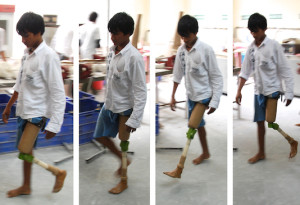Design

“Design is Creative Problem Solving” – Paul Polak
Definition: starting from scratch to create innovative products and services tailored for the very poor, armed with a thorough understanding of what they really want and need and driven by what Polak and Warwick call “the ruthless pursuit of affordability.”
Zero-Based Design
Eight Keys to Zero-Based Design
There are eight keys to applying zero-based design to the conceptualization and implementation of a business that will market essential products or services to people living on $2 a day or less and be profitable enough to attract the capital necessary to reach global scale. By employing these principles in an integrated, bottom-up design process, you can fashion an enterprise that will truly help millions of severely poor people move out of poverty:
- Listening. Don’t look at poor people as alms-seekers or bystanders to their own lives. They’re your customers. Always set out by purposefully listening to understand thoroughly the specific context of their lives—their needs, their wants, their fears, their aspirations.
- Transforming the market. Think like Steve Jobs or Akio Morita (“I don’t serve markets. I create them!”). Your goal is to put a dent in the universe. A transformative new market will mimic the chain reaction in an atomic explosion, releasing energy to create yet bigger explosions. With success, your business will change economic behavior, create huge numbers of new jobs and transform the character of villages around the globe.
- Scale. Design for scale from the very beginning as a central focus of the enterprise, with a view toward reaching not just thousands or even millions of poor people but hundreds of millions. Scale isn’t mysterious; it’s fundamentally a mechanical process. You begin with a pilot project in, say, 50 villages. With success, you roll out 50 villages per month, then to 250 per month, and later to 500 or 1,000, building on what you learn as you go. Always keep in mind that you’ve set out to design a global enterprise—a profitable and sustainable working system, not simply a product or service.
- Ruthless affordability. Design and implement ruthlessly affordable technologies and supremely efficient business processes, offering prices not just 30 to 50 percent less than First World prices but often an order of magnitude less, or 90 percent.
- Private capital. Design for a generous profit margin so that you can energize private- sector market forces, which will play a central role in expanding any venture—drawing from a pool of trillions of dollars in private capital rather than the millions typically available for philanthropic or government-sponsored programs.
- Last-mile distribution. Design for radical decentralization that incorporates last- mile (even “last 500 feet”) distribution, employing local people at local wages in a marketing, sales and distribution network that can reach even the most isolated rural people.
- Aspirational branding. This is even more critical for $2-a-day markets than for those serving the top 10 percent. Without aspirational branding that generates in buyers’ minds an appreciation for its most widely appreciated benefits and attributes, for example: Coca-Cola is just flavored, fizzy sugar water; and a Mercedes is only a high- priced car. Branding convinces us that paying a premium for these products will make our lives more rewarding.
- Jugaad innovation. The Hindi term jugaad connotes improvisation, working with what you have and paying unflinching attention to continuous testing and development. A cynic might call it simply ingenuity.
These eight ideas form the basis of the zero-based design approach.
Design for the Other 90%

“The numbers seem nutty. There are 6.5 billion people on this planet, 90 percent of whom can’t afford basic products and services. Half of them, nearly three billion people, don’t have regular access to food, shelter or clean water. Yet whenever we think, or talk, about design, it’s invariably about something that’s intended to be sold to one of the privileged minority – the richest 10 percent.” – Continue with original article from New York Times
See also: Design That Solves Problems for the World’s Poor from New York Times
From Paul’s D-Rev site, as an example of design for the other 90%: At the age of 16, Kamal lost his left leg in a motorcycle accident. Unable to afford a prosthetic limb, he used a bamboo staff to get around, leaving his hands callused and his spine misaligned. In August of 2008, Kamal was fit with a JaipurKnee and within a day, was able to walk. He soon found a job delivering food to patients and staff at the clinic that fit his knee. The video below shows Kamal in motion. For more information, see: D-REV: Design Revolution
90% of the worlds designers spend all their time addressing the problems of the richest 10% of the worlds customers. Before I die, I want to turn that silly ratio on it’s head.